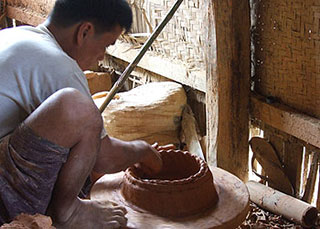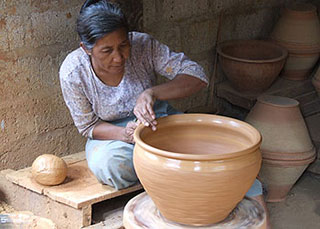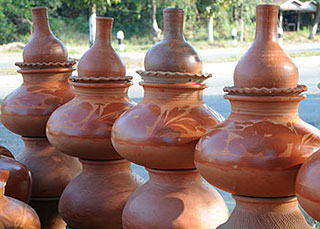About 2000 years ago the Pyu people. a Tibeto-Burman tribe settled in the upper part of Myanmar. their first capital established in Sriksetra near present day Pyay. Since the city was located near the great Ayeyarwaddy River. the economic and strategic use for migrating the pots became an important role at that time. Around the 8th century the Pyus relocated their capital north to Halin in the region of Shwebo. The making of the pots with clay and decorations were descended from such a time. The ceramic trading had been a popular and interesting deal. The Mottama harbour on the seacost. formerly known as Martaban. have been an important link in the ceramic pottery trade with the Southeast Asian countries.


Pottery has been the earliest craft in the history of human civilization. People in the terrain area had began to make use of pots. which could be easily and cheaply produced. Although pots are fragile. these can be made use in many useful ways. Pots were not only used to store or cook food but also as burial urns to bury gold and jewelries. The remains of some old pots used during the Pyu civilizations were discovered. giving evidences that pots had been used since then. Remains were also found in Bagan and Mrauk-U regions. Today. the main pottery works in Myanmar are situated in Nwe Nyein village near Kyauk Myaung. a river-side town near Shwebo and Twante near Yangon.


The making of Pots
Thick clay is mixed with the silt from the river to make a suitable consistency. then it is allowed to dry after which it is pounded into a fine powder. After sieving several times. the powder is allowed to seep in water for some days. After the silt has settled. the clear water is poured away and the remaining clay worked over until smooth. After that. lumps of it are rolled and given over to the potter.
Even though plastic. steel. aluminium wares are available. hand-made pottery is still very much preferred by Myanmar and still in use in the cultural traditions.
